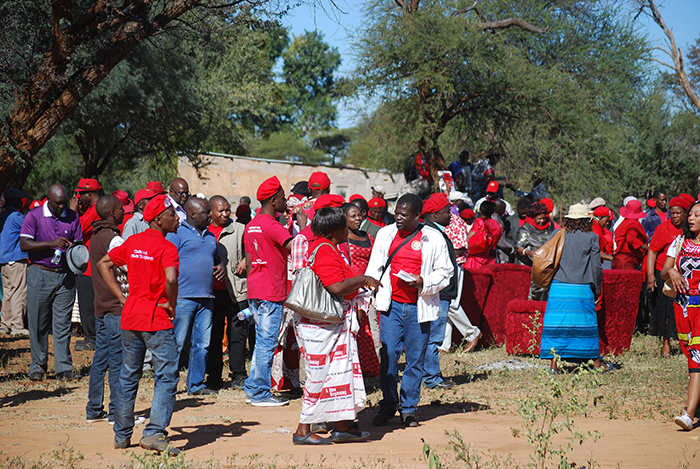
CHAPTER 3
October 2013 – December 2018
3,1 By coming up with Zim Asset, the government seeks to address on a sustainable basis, the numerous challenges affecting quality service delivery and economic growth. The Plan is expected to consolidate the gains brought about by the Land Reform, Indigenisation and Economic Empowerment and Employment Creation Programmes, which have empowered the communities through Land Redistribution, Community Share Ownership Trusts and Employee Share Ownership Schemes, among others.
3,2 The interventions identified for implementation in this Plan are mainly informed by the Zanu PF Central Committee Report to the 13th National Peoples Conference of 2012 which gave birth to the Zanu PF Manifesto, His Excellency the President’s speeches at the occasion of his inauguration and the official opening of the First Session of the Eighth Parliament of Zimbabwe,
National Development Priorities and the UN Millennium Development Goals as well as the new Constitution.
3,3 During the plan period, the economy is projected to grow by an average of 7,3%. It is expected to grow by 3,4% in 2013 and 6,2% in 2014 and continue on an upward growth trajectory to 9,9% by 2018 as shown in table 1 below.
The above growth projections are anchored on the successfulimplementation of Zim Asset.
3,4 Overall assumptions of the Zim Asset plan:
- Chamisa under fire over US$120K donation
- Mavhunga puts DeMbare into Chibuku quarterfinals
- Pension funds bet on Cabora Bassa oilfields
- Councils defy govt fire tender directive
Keep Reading
3,4,1 The following broad assumptions will anchor the growth of the economy during the period 2013 – 2018:
i Improved liquidity and access to credit by key sectors of the economy such as agriculture; ii Establishment of a sovereign wealth fund; iii Improved revenue collection from key sectors of the economy such as mining; iv Increased investment in infrastructure such as energy and power development, roads, rail, aviation, telecommunication, water and sanitation, through acceleration in the implementation of public private partnerships (PPPs) and other private sector driven initiatives; v Increased foreign direct Investment; vi Establishment of Special economic zones; vii Continued use of the multi-currency system; viii Effective implementation of value addition policies and strategies; ix Improved electricity and water supply.
3,5 Key drivers for projected growth targets.
3,5,1 The key drivers for this growth and employment creation will be accelerated development through value addition processes in the:
i Mining sector; ii Agriculture sector; iii Infrastructural sectors primarily focusing on power generation; iv Transport sector; v Tourism sector; vi ICT sector and vii Enhanced support for the SMEs and co-operatives sector.
3,5,2 In addition to the aforementioned, peace, security and defence are also key drivers in ensuring a conducive environment for macroeconomic growth as these are important in protecting the country’s sociopolitical environment, sovereignty and territorial integrity.
3,6 Key success factors
3,6,1 The implementation of this Plan will rely on the following key success factors:
i Political commitment and leadership from the highest level. ii Strong collaborative partnerships among government agencies, the private sector, citizens and other stakeholders; iii Human capital development programmes to enhance the acquisition of requisite skills; iv Scientific research and development; v Continued use of the multi-currency regime to consolidate macroeconomic stabilisation; vi Introduction of special economic zones; vii Creation of special funding vehicles such as acceleration of the implementation of PPPs; viii Establishment of the sovereign wealth fund; ix Institutionalisation of RBM across the public sector (civil service, parastatals, state enterprises and local authorities); x Value addition and beneficiation in productive sectors such as mining, agriculture and manufacturing; xi Rehabilitation, upgrading and development of key infrastructure and utilities comprising power generation, roads, rail, aviation and water; xii Deliberate implementation of supportive policies in key productive economic sectors such as agriculture, mining, manufacturing and tourism in order to quickly grow the economy; xiii Alignment of legislation, policies and guidelines by all Government ministries and departments in line with Constitution Amendment (№ 20) Act 2013.
3,7 Strategic direction
3,7,1 In implementing this plan, the government envisions the growing of a robust economy that is highly competitive in the region and the rest of Africa, as well as the building of an empowered society that owns the means of production.
3,7,2 The Vision of the Plan is “Towards an Empowered Society and a Growing Economy”.
3,7,3 The execution of this Plan will be guided by the following Mission: “To provide an enabling environment for sustainable economic empowerment and social transformation to the people of Zimbabwe”.
3,8 Key strategies The Plan seeks to boost economic growth and development and will be guided by the following strategies that are aligned to cluster priorities:
i Investing in sustainable and robust solutions in order to address the challenges of food insecurity and undernourishment; ii Implementing the Presidential agricultural input support scheme; iii Providing social services encompassing construction of housing, schools, hospitals and other social amenities particularly in the new resettlement areas; iv Availing and increasing economic opportunities for women, youths and the physically challenged in communities in conformity with the Indigenisation, empowerment and employment creation thrust; v Expanding the accessibility and utilisation of ICTs to improve service delivery and accelerate economic growth; vi Building and rehabilitating infrastructure and utilities as enablers for economic growth and prosperity; vii Establishing special economic zones; viii Improving production and export of goods and services through value addition and beneficiation; ix Implementing an Import Substitution programme (particularly to address machinery, equipment, fuels, chemicals and consumer products); x Fostering strategic linkages and formalisation among SMEs and co-operatives across all sectors of the economy; xi Recapitalising and capacitating the industrial development Corporation, Infrastructural Development Bank of Zimbabwe , AgriBank, Small Enterprise Development Corporation, the Minerals Exploration Company, Zimbabwe Mining Development Corporation and the Minerals Marketing Corporation of Zimbabwe to grow the economy and create employment; xii Reinventing the business of the government through the Integrated results-based management (IRBM) system; xiii Accelerating the implementation of PPPs to fund economic revival and infrastructure development.
Zim Asset to continue tomorrow











